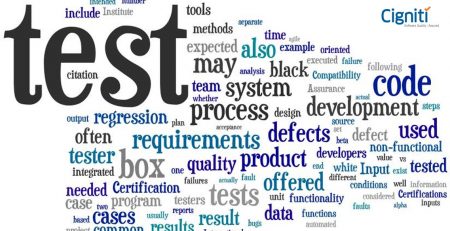9 best practices for Test Management
Test management is a comprehensive process involving multiple phases of risk analysis, test estimation, test planning, test organization, test monitoring control, issues management, and test report and execution. However, it has its share of challenges, such as lack of time for testing, lack of required resources, absence of co-located test teams, and ambiguity of test requirements. To achieve the highest level of effectiveness in the test management process, it is crucial to address and overcome these challenges initially.
An adequately followed test management approach consistently helps meet and exceed customer demands in terms of product quality. The race among organizations to reduce the time to market with the best quality products is laying an even greater stress today on such a framework than ever before. Being the center of attention, if followed correctly, the process will lead to better products and more satisfied customers.
Let us understand the test management best practices:
Test Management recommendations
The best Test Management techniques include keeping the test efforts organized with well-defined processes and systems in place. Since different projects may have different specific testing requirements, an effective test management approach can deliver a predictable and repeatable process. Such processes are usually easier to estimate and plan, which helps the overall management and control of a project.
To overcome the challenges that hinder the implementation of a successful test management environment, organizations may try to use the following well-known practices to implement a successful test management system:
1. Begin the Testing Activities Earlier in the SDLC
Even though this is an unsaid rule, few organizations follow it. This leads to bugs being identified later – which adds to the costs. The test process, therefore, must begin as soon as a few test cases have been written or if they can be extracted from the initial software requirements.
2. Perform Iterative Tests
Software testing must be performed iteratively. This risk-based approach helps generate important testing assets and also helps reduce problems going ahead by garnering focus on bugs or any unwelcome delays early on in the cycle.
3. Reuse Test Assets and Improve Time Spent Every Time
Recycling and reusing test procedures and test automation objects always help enhance the quality and efficiency of a product and teams, which can save a lot of time and effort in this simple strategy. However, it requires test management skills to foresee if a specific asset can be reused in the future.
4. Utilize Testing Strategies Based on Requirements
Different strokes fell different oaks, they say. Similarly, to perform various tests, such as agile, security, mobile, big data, and analytics, you must follow different testing approaches that suit the specific test management framework. In other words, try to follow a requirements-based testing approach that helps in system/application validation but also helps in calculating the testing efforts needed.
5. Ensure Proper Coordination Between Co-located Testing Resources
Utilizing the skills and effective coordination of co-located resources is the need of the hour as it helps overcome resource issues, maximize productivity, and improve timelines, thereby improving ROI. Proper tools and channels, such as utilizing Web clients or automatically– replicated data, must be used to overcome the inherent technical challenges involved.
6. Define & Enforce Flexible Testing Processes
Because different projects have different testing needs and require additional testing efforts, we need customizable test management approach for creating an automated workflow. This process should be repeatable and allow for further optimization and modifications as required. For a successful test management implementation, it is imperative to clearly define the process along with the workflow and then enforce the same within the team. This is especially true if your organization adheres to strict regulations such as CMMI- SVC v1.3, Maturity Level 5, ISO 9001:2008, ISO 27001:2013, or HIPPA. These standards need to be audited and thus have strict compliance needs for validation.
7. Coordinate & Integrate with the Development Teams – Use DevOps Shift-left Practice
To achieve maximum communication and seamless integration of a product testing environment, testing and development teams need to work in complete tandem with each other. This improves quality, reduces communication issues, and brings missed details to the fore.
8. Communicate the Correct Status at the Right Time
The thing with proper communication is that if not made at the right moment, it might also cost an opportunity. Proper test management best practices involve the complete sharing of all relevant data, such as goals and status, in the right format, at the right time, to the right stakeholders for a project to be successful.
9. As Someone Said – “To Save Time, Automate, Automate, Automate!”
Performing the many tasks involved in test management requires a lot of time and effort. Utilize specific Test Management tools – commercial or open–source – to reduce the time spent. While most of these test management tools need to be installed in-house, others can be accessed as Software as a Service (SaaS), for example, HP ALM/Quality Center, QAComplete, Silk Central, Zephyr, JIRA, and IBM Rational Quality Manager.
Conclusion
Using newer approaches for implementing a successful test management strategy is recommended. Following the test management best practices suggested herein will help overcome almost all obstacles.
At Cigniti, we have a specialized, dedicated Test Management team involving highly–skilled, co-located software testing professionals who ensure the delivery of quality products to accelerate time-to-market and reduce test efforts and expenses. Talk to our experts to know how we can help you optimize your Software Test Life Cycle.





Comment (1)
Another worth mentioning Test management tool is PractiTest, which is a SaaS only tool that allow customization, integrates with leading bug tracking tools to allow for better coordination and control and has a flexible pricing model.
Disclaimer- I work for the company.